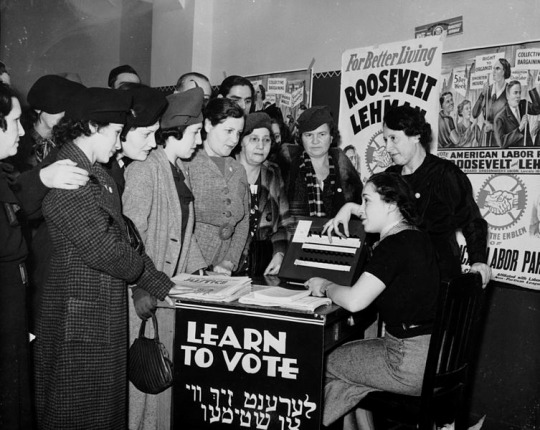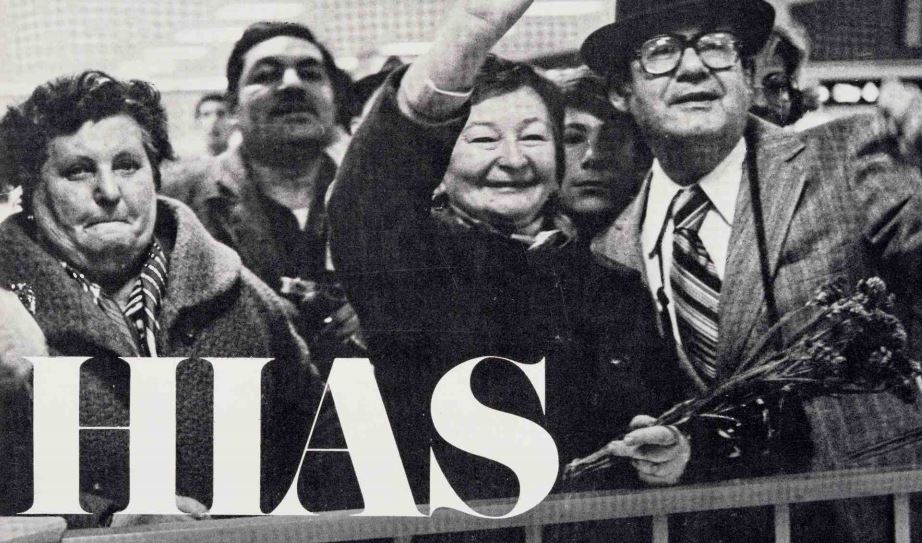By James Benjamin Nadel, Communications Outreach Associate
As the
nation prepares to head to the polls this November 8th, the American Jewish Historical Society and the Yeshiva
University Museum have developed a display of their materials that demonstrate
Jewish involvement in political elections of the past. The items included,
which span across nearly a century of American history, exemplify the various
political activities in which Jews have partaken, and continue to
partake.
A
particularly eye-catching testament to this history are several medals and
medallions, preserved and maintained by the American Jewish Historical Society,
from past national party conventions. With these gold-colored and intricately
decorated badges, Jews and others from across the political spectrum announced
their party membership. The display includes both the 1932 Republican National
Convention delegate’s badge, brandishing an etched profile of George Washington,
and a Democratic equivalent, with the faces of Franklin Delano Roosevelt and his
running mate John Nance Garner in relief.[1]
The politically engaged also showed support for their candidates in ways that
emphasized their Jewishness. For instance, a button on display for 1940
Republican presidential candidate, Wendell Willkie is written in pseudo-Hebraic
script.

Willkie campaign button, 1940, Collection of Yeshiva University Museum
Another button,
from the collection of the Yeshiva University Museum, proclaims its owner’s
support for the “American Labor Party,” a lesser-known political group with
affiliations in the Jewish-American community. The American Labor Party (ALP),
established in 1936, was born out of the Social Democratic Federation of
America (SDF), itself a New York-based splinter group from the wider Socialist
Party of America. Originally created to encourage socialist voters to support FDR’s
presidential campaign and Herbert Lehman’s New York gubernatorial candidacy, the ALP also had a
strong voice among American Jews and had connections to The Jewish Daily Forward. Indeed, during the 1936 election, women
in the ALP organized an event to educate other women about the voting process.
The event’s sign asks its participants, in both English and in Yiddish, to
“LEARN TO VOTE”.

Women surrounded by posters in English and Yiddish supporting Franklin
D. Roosevelt, Herbert H. Lehman, and the American Labor Party teach
other women how to vote, 1935. | International Ladies Garment Workers Union Photographs (1885-1985) | Kheel Center for Labor-Management Documentation and Archives,Cornell University Library.Creative Commons: https://commons.wikimedia.org/wiki/File:Women_voter_outreach_1935_English_Yiddish.jpg
In addition to depicting the history of
Jewish political support, the display also shows a few pieces that regard the
place of Jewish candidates themselves in American elections. One such item,
from the collections of the American Jewish Historical Society, is a 1959
article written by long-time journalist Bernard Postal, entitled “Can a Jew be Elected in Our
Time.”

Can a Jew Be Elected in Our Time” by Bernard Postal for the Jewish Digest, 1959, Collection of the American Jewish Historical Society, P-606 Bernard Postal Papers
Postal, then editor of the Jewish
Digest, posed this question to various political figures and received
several responses. Among them was a letter from then senator John F. Kennedy, who expressed his belief that the
American people were well ready to elect a candidate “…in a national election…”
on the basis of his or her policies and character rather than religious
background.[2] This
letter, also on display and from the American Jewish Historical Society,
anticipated Kennedy’s own election as the first Catholic president just a year
and a half later. Continuing on this theme, the display also contains a
skullcap made in support of Connecticut Senator Joe Lieberman’s 2004
presidential nomination campaign. However, this practice has not been confined
to Jewish candidates alone – the Yeshiva University Museum holds skullcaps from
both Barack Obama and John McCain’s respective campaigns.

Skullcap: Lieberman for President, 2004, Gift of the Lieberman family, The Collection of the Yeshiva University Museum
This year, as
the election approaches, Jews across the country are finding connections
between political activism and Jewish culture and history. Massachusetts artist
Adrienne Figus has made these pins, which implore people to go out and “shtimt!” (the Yiddish
word for vote). Thanks to the current Great Treasures in the Great Hall display,
we know that such an item is the just the latest in a long tradition.
—
[1] Democratic National
Convention Roosevelt/Garner Badge, Chicago
1932 or Philadelphia 1936, Collection
of the American Jewish Historical Society, Gift
of N. Taylor Phillips/Rosalie Phillips (1956.004.010)
Republican
National Convention Hoover/Curtis Badge, Chicago,
IL, 1932, Collection
of the American Jewish Historical Society, Gift
of N. Taylor Phillips/Rosalie Phillips (1956.004.011)
[2]
“Can a Jew Be Elected
in Our Time” by Bernard Postal for the Jewish Digest, 1959, Collection
of the American Jewish Historical Society, P-606
Bernard Postal Papers
Senator
John Kennedy to Bernard Postal, May 5, 1959, Collection
of the American Jewish Historical Society, P-606
Bernard Postal Papers


